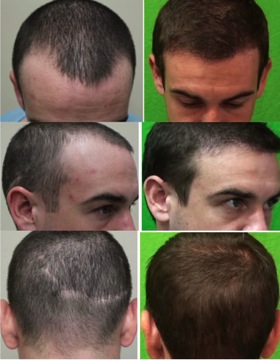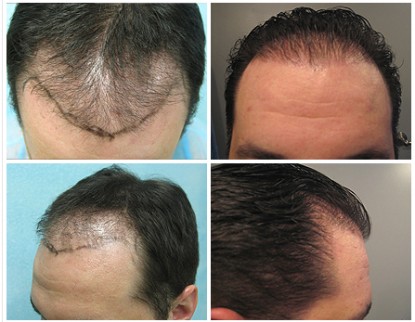What is FUE ? How Did FUE Begin?
FUE, also known as follicular unit extraction, is an evolution of the early methods of hair restoration. A Japanese dermatologist in the early 20th century is the first on record to have developed a technology for hair restoration. Since then, there has been scalp reduction surgery, flap surgery, and the first of hair transplantation in the 1950s. Hair transplantation has seen many developments as well, spawning from the pluggy and unnatural-looking punch graft, to the FUE techniques of today.
FUE was first developed in the 1980s, once again in Japan. FUE is basically a refinement of the wide-circumference punch grafting method. Instead of the 4mm round grafts of the 50s, we have tools to make miniscule incisions for extraction. This means FUE scarring is drastically minimized as well, to the point of cosmetic insignificance. But what is FUE?
How The FUE Procedure Is Done
FUE hair transplantation starts with a microscopic individual incision, and goes on to potentially thousands more. These incisions are made in the donor area, to extract the meticulously selected follicular units (natural groupings of between one and four hairs) one by one for transplantation to the balding recipient area of the scalp.
Due to the arduous and protracted nature of such a detailed surgery, FUE requires a more advanced practitioner than some other hair transplantation procedures. Typically, the tool used for extraction is a handheld pen-shaped device, operated manually. Newer practitioners with limited experience might find the Artas robotic machine is a less refined method suited for newbie practitioners who are less skillful in performing FUE. FUE is highly skill dependent and the prospective patient should research this aspect carefully.
Why FUE Is Superior To Strip Surgery
A common debate among hair transplantation forums, from journals to blogs, is the choice between FUE and strip surgery. Several obvious and conclusive proofs resolve the debate—clearly pointing to FUE as the front runner. A few of those proofs are:
- FUE hair transplantation does not leave a linear scar.
- The microscopic incisions made for FUE result in a negligible amount of scarring.
- FUE is far less invasive, which means a faster recovery time.
- FUE hair transplantation makes use of specific donor hairs, such as those from behind the ears or nape of the neck, to create a gradual and natural-looking hairline.
- UGraft FUE enables body hair transplantation (BHT), which vastly widens the donor hair pool.
- Those suffering severe baldness, with no donor hair to offer, are no longer considered poor candidates for hair transplantation. BHT puts them back in the running.


